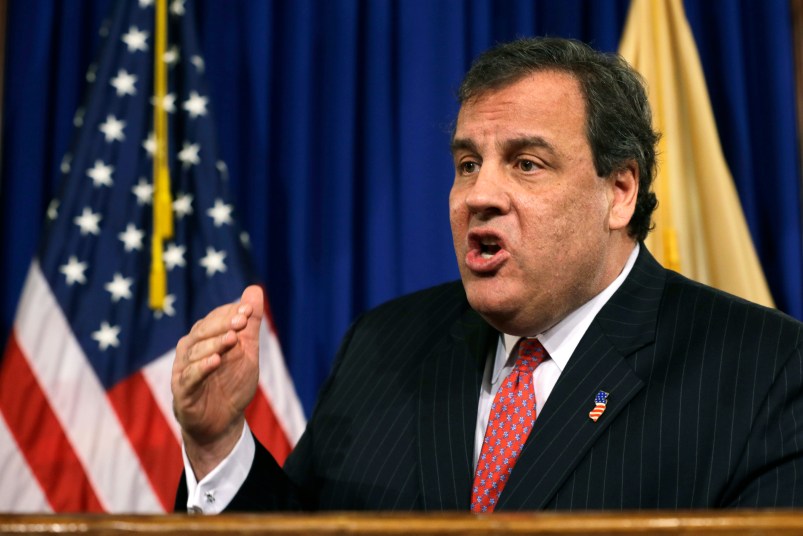In case you (wisely) dropped out of BridgGate over the weekend, let me update you on some new developments. The upshot of Friday’s massive document dump was that it didn’t produce any one smoking gun type email like the one that got Bridget Kelly fired. What it did do was paint a pretty clear picture of lots of Christie’s staffers, appointees and associates involved if not in planning the Bridge shutdown then in working to cover it up after the fact. (Here’s our look at the big four unanswered questions as of right now.) But the real change, I think, is a change of what the key question is driving the reporting.
As the Christe Bridge story lumbered into national public view over recent weeks, the basic question has been this: Was a botched ‘traffic study’ which snarled traffic in Fort Lee, NJ really political payback aimed at the city’s Mayor, Mark Sokolich for not endorsing Christie? The upshot of the two email releases and the subsequent firings basically removed any question of whether the traffic study was real (it wasn’t) and confirmed that it was by various definitions a bad act (an intentional plan to snarl traffic and then cover up the real reasons with the ‘traffic study’ figleaf.) But as that’s become more clear, just why it all happened has gotten a lot less clear.
I do not think we can yet rule out the idea that the failure to deliver an endorsement was behind this. But on various levels, it doesn’t seem to add up. For all Team Christie’s documented history of vindictiveness and payback, it just seems like a a huge, very public and fairly investigable move for such a relatively insignificant endorsement. More telling, both Christie and Sokolich seem to agree there was no real push to even get Sokolich’s endorsement, further undermining the logic of the theory. Over the weekend, the Times reported that Sokolich now does remember a member of Christie’s reelection team asking for an endorsement. He never replied and eventually endorsed Democrat Barbara Buono. So that does change that part of the story a bit.
Still, the number of people involved and no clear evidence there was much of an attempt to get an endorsement or a dustup over one makes the endorsement theory seem increasingly dubious.
Another minor wrinkle is something that emerges about Sokolich in the second document dump – when he’s trying to get the traffic jam resolved he goes out of his way to make clear to Bill Baroni that he wants to deal with the issue quietly, without politics or the press getting into the mix. I explore that here.
In any case, now we know the ‘what’ (politicos forcing a traffic debacle major Fort Lee for no legitimate reason). What’s much less clear is the ‘why’. And I suspect only knowing the ‘why’ will help us get a handle on the ‘who’. As in who was behind it and whether it went all the way to Gov. Christie.
The one thing that seems clear is that fewer and fewer people think this was all about an campaign endorsement.
The most interesting theory to arise was first floated by Brian Murphy and Steve Kornacki on Kornacki’s MSNBC show this weekend. Murphy followed up with a lengthier explanation here at TPMCafe. Definitely give it a look. It’s a must read.

The upshot is that the whole caper may have been tied to a billion dollar investment project right on top of the bridge lanes in question, one which almost certainly would have been torpedoed if the closures became permanent or even persisted for long. It’s speculation. We lack direct evidence so far. But it fits much better as an explanation, particularly in New Jersey, where big development deals and efforts to leverage public office to get a taste of those deals for the big money is a matter of course on a bipartisan basis.






